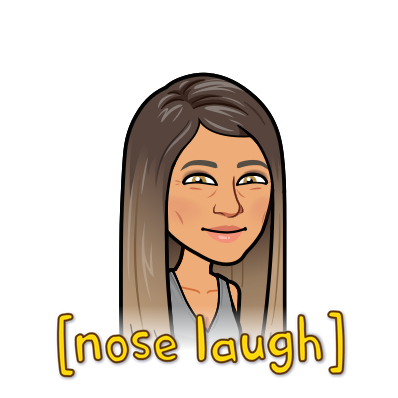
Also helps defeat facial recognition systems you haven’t consented to be scanned by.

Is covid still a thing in the sense that its differentiable from other common viruses?
I havent thought about or considered covid in any way for the last 1-2 years. I have gotten sick but i didnt seriously consider that to be connected to covid over anything else.
Anecdotally: i fell sick with covid less than 2 years ago. I never got better.
I definitely had a huge decrease in lung capacity, and I definitely had my sense of taste permanently altered.
And I consider my issues to be mild compared to most people who have ongoing issues.
I know some people, like yourself, who are just in a perpetual state of “sick” and literally just stay locked in their houses all day. I can’t even imagine. Shit sucks, and that’s the understatement of the year.
Yes, it very much is a thing.Covid is more deadly than the flu, and has a big risk of postviral illness. We are still in a pandemic.

Have you considered checking your privilege and/or remaining informed about current events even if you think they don’t impact you personally (but definitely do, as well as everyone else around you)?
https://www.donotpanic.news/p/why-covid-can-never-be-just-a-cold

I know three people whose lung capacity seems to be permanently diminished from COVID, and one of them has chronic chest pain now. He was in his 20s when he caught it. I don’t know any other common virus that does that.

COVID is definitely still a thing and is differentiable from other viruses. COVID mutates so rapidly that at least 4 new major strains emerge a year, which means that at the worst you can get COVID 4 times a year since each new major strain avoids total immunity from a previous infection. Prepare for an infodump.
The US CDC just a few days ago stated that COVID is a constant threat and recommended 2 boosters a year for COVID. This is a return to reality from their previous cope that COVID is like the flu (influenza) with its single wave in the winter (or that the COVID pandemic is over). As stated, COVID mutates so rapidly that per-quarter boosters would be a better fit against the current major strain, but 2 boosters is better than 1.
COVID’s danger is that it attacks the entire body via systemic inflammation and is not just a respiratory illness. The clues were there at the beginning; the loss of smell is brain damage. Most organ damage is not fully recoverable from (it’s bad).
COVID found in people’s intestines 2 years (and could be longer) after infection: https://www.science.org/doi/10.1126/scitranslmed.adk3295
COVID found in people’s bones post-infection (and post death): https://wwwnc.cdc.gov/eid/article/30/8/24-0145_article
COVID damaged the vascular system in young people in the weeks following COVID infections: https://journals.physiology.org/doi/pdf/10.1152/ajpheart.00897.2020
Long COVID is either organ damage or continued systemic inflammation (ME/CFS). The organ damage is that COVID’s initial infection damages something in your body. The continued systemic inflammation is either COVID continuing to exist embedded in tissue or organs causing continued inflammation or your immune system being damaged and then incorrectly causing systemic inflammation to yourself.
What makes COVID extremely dangerous is that the chance of getting long COVID is cumulative with each COVID infection.
Long COVID chance is cumulative at 15% per infection: https://www150.statcan.gc.ca/n1/pub/75-006-x/2023001/article/00015-eng.htm
US CDC study found 20% of people that had COVID got long COVID, and 7.5% of the US adult population has long COVID as of June 2022: https://www.cdc.gov/nchs/pressroom/nchs_press_releases/2022/20220622.htm
Combination of papers on cumulative long COVID chance: https://nitter.privacydev.net/antiviral_mktng/status/1803935316086071526
It is clear that 15% cumulatively chance per COVID infection is unfortunately a safe bet.
That 15% cumulative chance means that by the 7th COVID infection you will have some form of long COVID symptoms. With the previously mentioned 4 major new strains a year, some unlucky person already has reached 7 COVID infections in 2023 and very likely has long COVID. At a lower rate of 2 COVID infections per year (following the summer and winter peaks COVID kind of follows now), that person will get long COVID by 2025. At 1 COVID infection per year, someone has until 2028 until they are guaranteed to have long COVID symptoms. That’s bad.
Long COVID can range from annoying chronic symptoms, systemic weakening of your body, inability to think intensely, or even total debilitation (ME/CFS). It’s very bad that almost everyone will have something in that range by 2028, and most people will have something in that range by 2025.
COVID’s relatively high death rate initially effected old and vulnerable people (obligatory check your privilege), but it is clear that it has the teeth to come for us all in time - it will just wear us down by trying brand new attack vectors at least 4 times a year.
So what can you do now? Most of this depends on privilege (healthcare access, health insurance access, work flexibility).
**Get your boosters. **
mRNA vaccines (Pfizer and Moderna in the US) are better as single-shots but can have intense symptoms (the more intense the symptoms from the vaccine, the better it protects you, at least) while non-mRNA vaccines (Novavax in the US) need to be taken in a two shot set (they will only happily give you the 1st shot, you need to pay for the 2nd yourself) but they won’t have intense symptoms.
**Wear a mask if you can. **
Wear a well-fitting N95 mask in crowded situations where you do not need to eat or drink. It’s even better if you avoid indoor restaurants, they’re a major COVID spread vector (rip to waiters/waitresses out there). The 3M VFlex works well for larger faces and the 3M Aura works well for medium-to-small faces. You can reuse masks until they lose most of their stiffness. The 3M Aura rubber bands fray after several uses, get the version without rubber bands. The 3M VFlex rubber bands do not seem to fail like the 3M Aura’s rubber bands do. Basically, something that goes around your head and does not hold onto your ears. You cannot get an amazing seal with around-the-ear masks without ripping your ears off.
If you need one that goes over your ears, get a KF94 like the LG Airwasher (big face) or Bluna (medium face) from Korea. Surgical masks and cloth masks are abs shit for breathing and you will suck them into your mouth if you do anything vaguely intense and they’ll greatly hinder your breathing. Ones that hold their shape (VFlex/Aura/KF94s) are essential to being able to breath in a mask. Surface area is important as well, the KF94 style (Aura/KF94s) and the VFlex (most surface area) have enough.
**If you feel sick, identify if it is COVID. **
Get your doctor to get you a PCR test (your doctor may resist as COVID-downplaying-propaganda is rampant) or get an at-home PCR test (like LUCIRA). If you are in the EU, take 2 rapid tests the day you notice symptoms and 2 rapid tests 2 days later; this approach is not economical in the US where rapid tests are $10 each. PCR tests can detect COVID before you’re infectious, but rapid tests have a 75% chance of working (that’s why you take 2 in a row) and really only work if you are infectious with COVID (hence 2 days later, it tries the test again when you are likely to be more infectious later in the disease cycle). PCR is the faster way, but can be harder to get. Swab throat then nose, COVID can start in your throat.
If it’s COVID, get Paxlovid.
Get Paxlovid, you may be able to get it from a pharmacy with a pharmacist-provided prescription or you may be able to get it prescribed from your doctor or telehealth with news of your positive test. Paxlovid is the only COVID antiviral that works somewhat, and it lowers the viral load which reduces how much damage it can do to you.
After Paxlovid you can have a “rebound” of COVID - this is just that Paxlovid is for 5 days and it usually takes 7 days of Paxlovid to fully defeat COVID. The prescribed amount ends too early, so COVID rebounds. Your body has had time to learn this variant of COVID while it is diminished, so you’re better off. If you can, get 2 rounds of Paxlovid - but that is only really viable if you have a sympathetic doctor who understands Paxlovid’s 5 day regimen is too short (more privilege).
Take it easy for as long as you can.
If you have the privilege post-COVID-infection try not to do extreme exertion for a month or two to let your vascular system recover so you do not induce farther vascular damage (like a heart attack at the worst). Same goes for other damaged organs.
What does the future hold? We have a “deadline” in 2028 for almost all people having some form of long COVID and all.
HIV-like drugs to remove long COVID due to continued, deep infection. China does this already by using actual HIV drugs.
COVID vaccines that are nearly 100% effective at preventing infection to prevent organ damage. This or something that somehow prevents COVID from damaging organs (prevent systemic inflammation).
Something to stop systemic inflammation due to a haywire immune system.
The burden of knowledge is heavy, but it is important to know the most immediate danger to humankind to be able to be an effective member of society.

I have a cold virus at the moment. Home test confirmed it wasn’t Covid, influenza a/b or RSV. So just a bug. It’ll run its course and I’ll be ok soon.
I feel pretty bloody ordinary but not as bad as I did when I got Covid when I couldn’t stand up for more than 45 min at a time due to fatigue. Or the only time I’ve had influenza A which absolutely rocked me and necessitated a hospital visit for fluids.
I’ve not had cause to leave the house since I became symptomatic but I need to tomorrow. I’m going to wear a mask and keep my distance as much as possible. I was reflecting that a few years ago I would have gone to work in my office. I would have justified it as ok because I feel like I’m on the tail end of the illness and can probably handle going in, even if I feel like shit.
And my workplace would have also expected that. So bizarre to think about.

Bruh what 4 years too late
Sounds like you are not up to date with current date. Here have a look https://mastodon.social/@augieray/112734076209328142


